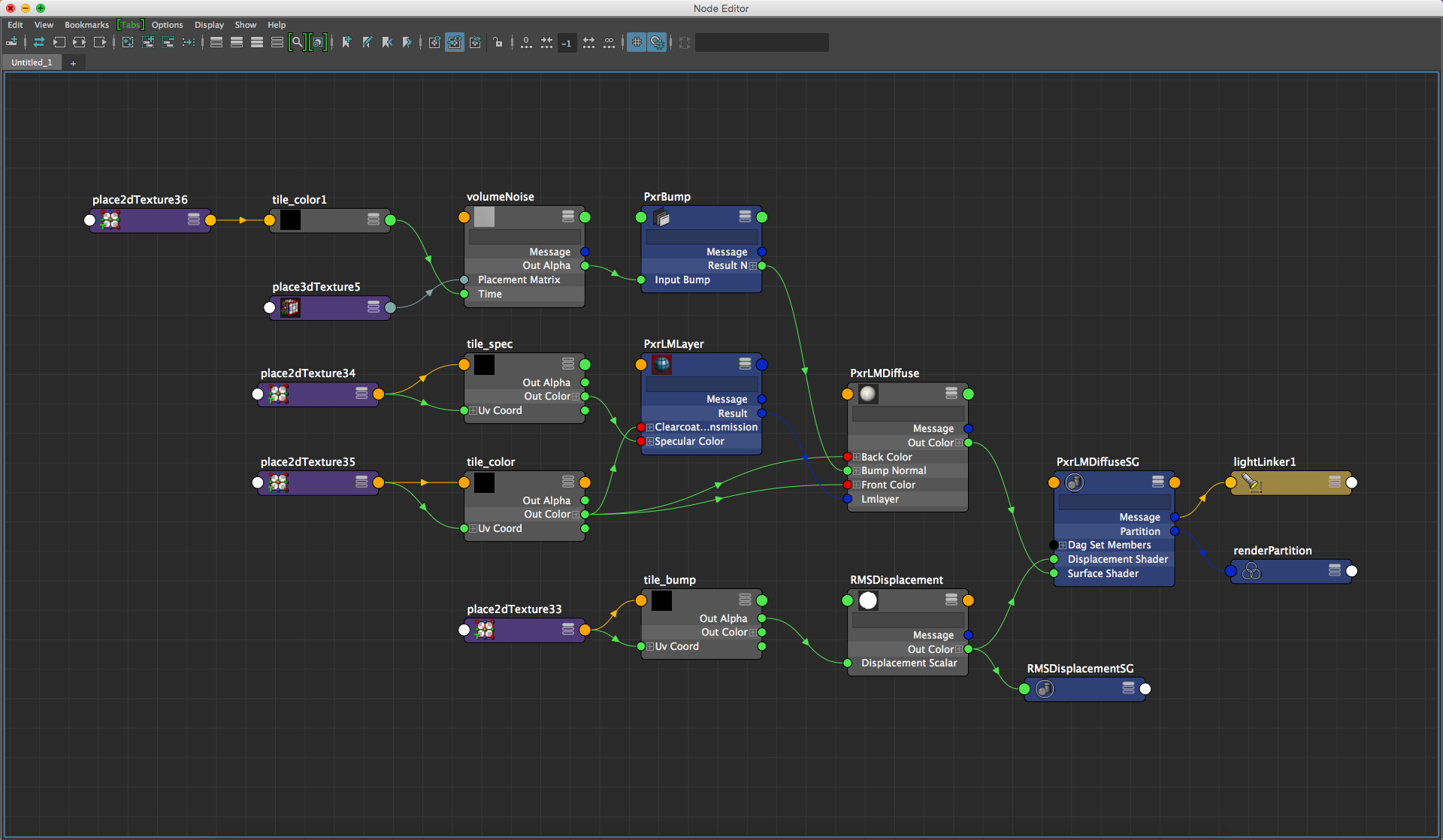

- RENDERMAN TUTORIAL NORMAL MAPS MAYA UV MAPPED MANUAL
- RENDERMAN TUTORIAL NORMAL MAPS MAYA UV MAPPED SKIN
- RENDERMAN TUTORIAL NORMAL MAPS MAYA UV MAPPED PLUS
We need to make sure this texture map is color managed by enabling the "Linearize" checkbox. To hook this up, we're using a PxrTexture node and plugging it into the Subsurface Color attribute. The Subsurface Color is the most important attribute for the look of our skin, and lucky for us, we have a great albedo map based on a real-life scan. The differences in subsurface models are small, but added accuracy, as small as it might seem, is important for photorealism.īurley Normalized vs Non-Exponential Path-Traced Subsurface on skin. If it's still becoming an issue and you see slight darkening, you can fix the problem areas by adding some diffuse lighting with the diffuse blend parameter, or simply add a slight amount of single scattering. PTSSS also comes with Single Scatter as part of the algorithm, so we have to worry less about thin surfaces. This subsurface model will provide the sharpness we need in pores and wrinkles.
RENDERMAN TUTORIAL NORMAL MAPS MAYA UV MAPPED PLUS
We've actually chosen to use Non-Exponential Path Traced, instead of Exponential Path Traced, as it has all the benefits of the latter plus a useful "Bleed" attribute which softens the subsurface results while keeping subtle detail. This model is useful for per-dermis layer customization, but we will focus on the recommended energy conserving workflows.
RENDERMAN TUTORIAL NORMAL MAPS MAYA UV MAPPED MANUAL
RenderMan also provides a manual Multiple Mean Free Path mode for artistic control. Single Scattering can be used on its own, but is generally better suited to complement the other subsurface models when they have issues with thin geometry. This will ensure the most accurate energy distribution.

Jensen and d'Eon dipole, on the other hand, are great for gummy surfaces which need to scatter light more sparsely, this could be great for cartoony characters.ĭipole Diffusion models have energy distribution limitations in very thin and backlit geometry, so it is always important to add Single Scattering for areas which are prone to these limitations, such as the nose, lips, and ears.
RENDERMAN TUTORIAL NORMAL MAPS MAYA UV MAPPED SKIN
Dipoleįor realistic skin the most natural dipole model is Burley Normalized. RenderMan gives the user lots of flexibility by providing 6 different subsurface models, plus 1 single scatter model.so which subsurface model do I use? Well.to understand this better, we need to separate them into four categories: Dipole, Multiple Mean Free Path, Single Scatter, and Path-Traced. For energy to be accurate, we will set our subsurface gain to 1, this way all incoming light will be scattered. It is important to note that skin doesn't have perfect direct light reflection, so we are not using the diffuse lobe. RenderMan's Pixar Surface Material, used in all Pixar productions and many VFX studios, has 7 different subsurface algorithms which can handle these effects very well, from cartoony to realistic, including cutting-edge Path Traced Subsurface models, which we like to confusingly call PTSSS. The resulting luminance created by this complex scattering of light, gives the skin a glow of scattered light, softening the light terminator.

The heart of realistic skin shading lies in Subsurface Scattering, which is the penetration and subsequent scattering of light into a surface. Thankfully all the maps are floating point EXR.Īs we can see in the material network below, we are not only using displacements to drive surface detail, but also bump and normal mapping, we'll go into that during our shading sub-chapter. It is important to use the highest bit depth possible for data maps to avoid compression or banding artifacts. Let's see what our efforts look like so far. Setting the Displacement Bound too high is inefficient and can make your render slow, so try to set this value as tight as possible. Leaving it at the default of 0.1 is usually ok, as we compute any minor discrepancies automatically. For our head, 0.2 will extend the surface bounding box 20%, which is enough to account for any slight displaced skin features such as moles. Something very important to keep in mind is the geometric attribute " Displacement Bound" which is a crucial attribute in RenderMan for specifying a bounding box for the displacement. The resulting displacement drives a PxrDisplace node which deals with the total amount of displacement. We've chosen to set the gain to 0.003, which is enough to see a significant amount of detail added, but not enough to overwhelm the original features. The Nexture displacement map needs more fine tuning or else we'll get overly bumpy skin. We've left the gain for the main Eisko displacement map to 1, because it comes with precise values. This will come in handy, because balancing multiple displacement amounts can be tricky. Once we have everything in place, we're combining the maps with PxrDispScalarLayer, which allows us to layer multiple displacement maps and give them independent values.


 0 kommentar(er)
0 kommentar(er)
